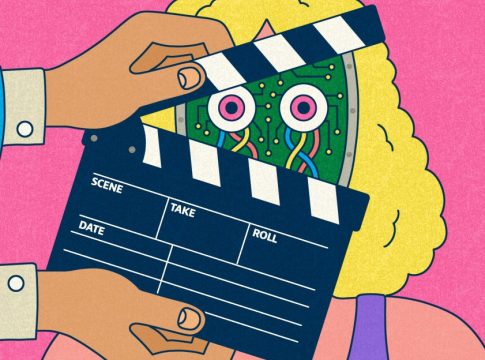The Rise of AI-Generated Content: A New Era for Filmmaking?
Artificial Intelligence (AI) is revolutionizing the landscape of digital media, and nowhere is this transformation more visible than in the realm of video content. Scroll through social media, and it’s nearly impossible to escape clips featuring bizarre animations or eerily lifelike but fictitious events. These AI-generated videos often attract considerable attention, prompting discussions about whether they represent a new form of art or an impending threat to traditional filmmaking.
The Polarizing Potential of AI
While many AI-generated clips are crude and lack aesthetic finesse, there’s a growing belief among enthusiasts that AI could reshape not only how films are made but also the very nature of storytelling. The advent of AI video tools has sparked excitement and apprehension; proponents argue that studios should be wary of this new competitor. Yet, the reality is that the current output of AI often falls short of what fans might expect from the silver screen.
Filmmaker Bryn Mooser is attempting to change this narrative through his newly launched production company, Asteria. With the aid of the research firm Moonvalley, Asteria aims to produce ethically generated content using AI that has been trained exclusively on licensed material. This focus on ethics comes at a crucial time, especially as major studios grapple with copyright issues surrounding AI output.
Bridging Technology and Creativity
Mooser argues that a significant disconnect exists between Silicon Valley’s vision of AI in filmmaking and the practical needs of creators. While text-to-video models that allow users to instantly create cinematic content sound appealing, they don’t align with the intricate control filmmakers require at the pixel level. Unlike the music industry, where AI can mimic voices and produce credible songs, video content demands a nuanced understanding of visuals that generative AI has yet to master.
To address this, Asteria utilizes its core generative model, Marey, to create customized models that suit specific artistic styles and narrative needs. For example, Asteria recently produced an animated short, "A Love Letter to LA,” by training Marey on original illustrations to generate unique visual assets. The approach underscores a commitment to quality, although it highlights the limitations of current generative AI in delivering consistently polished results.
Ownership and the Future of Filmmaking
One of Asteria’s core offerings is a more equitable ownership model for creators, proposing revenue-sharing opportunities and partial ownership of AI models. Mooser anticipates that these incentives could lead to a paradigm shift in how films are financed, potentially lowering production costs dramatically and making independent filmmaking more viable.
Yet, while the promise of faster production and minimized costs is alluring, it raises pressing concerns about job displacement in the industry. AI’s capacity to streamline workflows could lead to fewer roles for traditional film crews, a reality exacerbated by recent industry layoffs.
The Road Ahead for AI in Hollywood
As the entertainment landscape evolves, the fear that AI will replace human creativity looms large. However, Mooser suggests that it has the potential to democratize filmmaking, making it more accessible to aspiring creators. He highlights that adaptable filmmakers and technicians can find new, rewarding roles that complement AI technology.
The challenge ahead lies in balancing the benefits and risks of this new AI-powered ecosystem. While generative AI could alter how films are produced and financed, the ultimate test will be whether it can coexist with and enhance the rich tapestry of human creativity in storytelling.
With projects like Uncanny Valley, co-written and directed by Natasha Lyonne, Asteria aims to showcase the benefits of embracing generative AI while ensuring the human touch remains integral to filmmaking. Whether AI will become a collaborator or a competitor in Hollywood remains to be seen, but one thing is clear: the conversation surrounding AI and its role in the creative process has only just begun.

Writes about personal finance, side hustles, gadgets, and tech innovation.
Bio: Priya specializes in making complex financial and tech topics easy to digest, with experience in fintech and consumer reviews.

